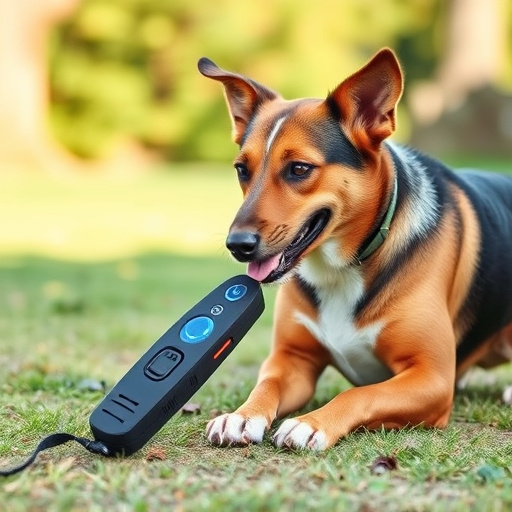For optimal results with ultrasonic repeller devices, strategically place them outdoors in problem areas frequented by target animals, near entry points like windows, doors, and vents. Use reliable power sources, maintain regularly, and combine with other deterrents for maximum effectiveness.
Animal control ultrasonic defense tools have gained popularity as innovative solutions for managing wildlife. This article explores the potential of these devices, known as ultrasonic repellers, in deterring animals through sound. We’ll delve into how they work, from understanding the technology to optimizing their placement. By following best practices and considering key factors like frequency range and animal behavior, you can effectively utilize these tools for a peaceful coexistence with wildlife. Discover the ideal best placement for ultrasonic repeller devices to achieve optimal results.
- Understanding Ultrasonic Repeller Devices
- Key Factors for Optimal Placement Strategy
- Best Practices for Effective Sonic Defense
Understanding Ultrasonic Repeller Devices
Ultrasonic repeller devices are innovative tools designed to deter animals through sound waves. These devices emit high-frequency sounds that humans typically cannot hear, but many animals find disturbing. Understanding how and where to use them effectively is key to their success. The best placement for these devices is in areas where animals have been known to congregate or enter, such as gardens, farms, or rooftops. Strategically positioning the repellers near potential entry points can help prevent animals from accessing certain areas.
For optimal results, ultrasonic repeller devices should be placed outdoors, away from human living spaces, to avoid any potential discomfort caused by the sound. Regular movement of these devices around problem areas can also enhance their effectiveness as animals will become less accustomed to the sound, making them more responsive to the repeller’s signals. Additionally, ensuring that the device is powered by a reliable source, like solar energy or a backup battery, allows for continuous operation without intervention.
Key Factors for Optimal Placement Strategy
When determining the best placement for ultrasonic repeller devices, several key factors come into play to ensure optimal effectiveness. Firstly, consider the type of animals you aim to deter. Different species have varying sensitivities to ultrasonic frequencies, so understanding their behaviors and habitats is crucial. For instance, these devices may be more effective against smaller rodents like squirrels or mice compared to larger predators like cats or dogs.
Secondly, the location of the devices should account for the natural flow of air and sound waves. Strategically placing them at entry points, such as windows, doors, or ventilation systems, can maximize coverage areas. Additionally, positioning them near sensitive areas like gardens, farms, or storage facilities can provide more targeted protection. Regular maintenance and testing are also essential to ensure these devices remain effective over time, especially in dynamic environments where animal behavior may adapt.
Best Practices for Effective Sonic Defense
To maximize the effectiveness of ultrasonic repeller devices, it’s crucial to employ best practices tailored to your specific situation. First, determine the best placement for these tools – strategically positioning them near entry points, such as windows, doors, and vents, can help deter animals from entering your space. Ensure the devices are out of reach for both you and pets, as they emit high-frequency sound waves that may be irritating to animals but generally harmless to humans and domestic animals.
Regular maintenance is another key practice. Keep the devices clean, replace batteries promptly, and check for any signs of damage or malfunction. Since ultrasonic repellents are most effective when continuously operated, consider using them in conjunction with other animal control methods like visual deterrents or scent barriers for a multi-layered approach that’s more likely to achieve lasting results.
Ultrasonic repeller devices offer a humane and effective solution for animal control, but their optimal performance depends on strategic placement. By understanding the principles of ultrasonic technology, considering environmental factors, and adhering to best practices, you can create a seamless and successful implementation of these devices. When properly placed, these tools can significantly reduce unwanted animal intrusion, ensuring a peaceful and secure environment for residents. Remember, the key to success lies in selecting the best placement for ultrasonic repeller devices tailored to your specific needs.
